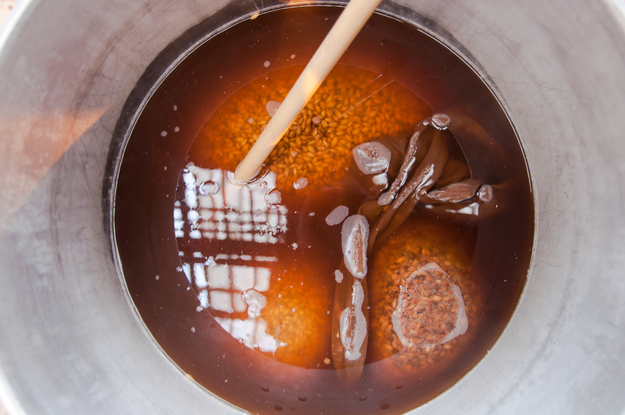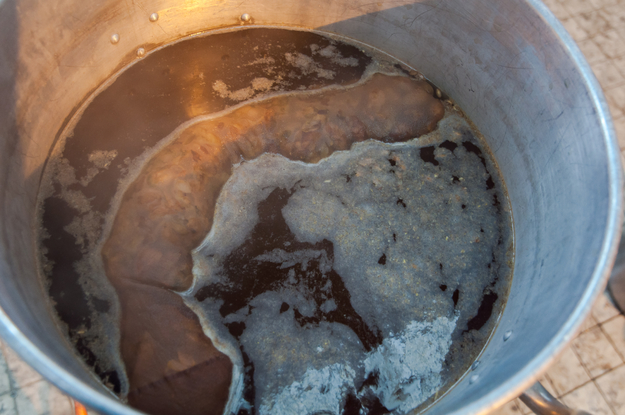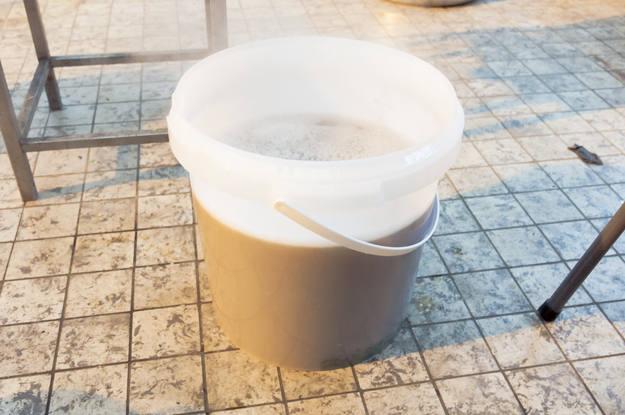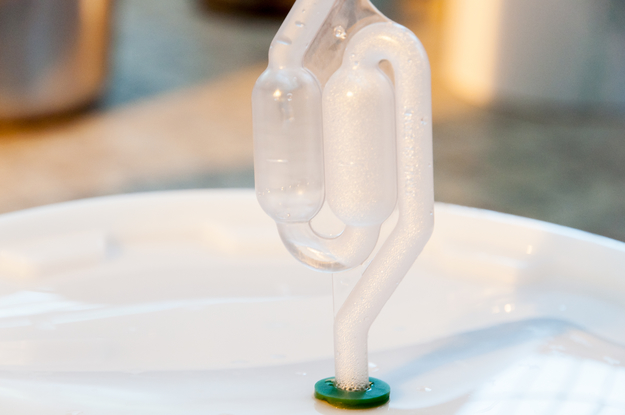For the brewing these ingredients and equipment were used (from left to right):
Ingredients and Equipment - Most of the Equipment we used for our first beer brewing

Pantyhose
Honey
Hops
Sanitizer and brush
Syphon
Thermometer
Malt
Yeast
Stirrer
Bucket (not on picture)
Gasheater (not on picture)
3 pantyhose were filled. One with 5kg of Basic Pilsener Malt, one with 1kg Aroma Malt. The last one with 45g of Hops.
Hops in pantyhose - 45g of hops stuffed in a pantyhose to prevent from falling in the cereal brough.
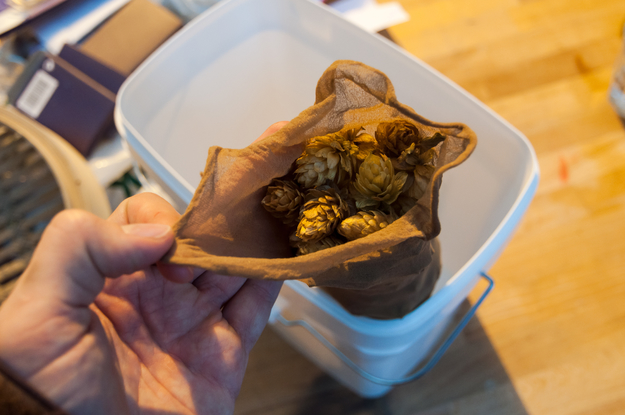
A huge pot with 30l capacity was used on a gasheater.
The bucket and the syphon were cleaned with the sanitizer, 17l of water were poured in the pot.
Brewing setup - This is how we brewed in front of the Mediamatic Cleanroom
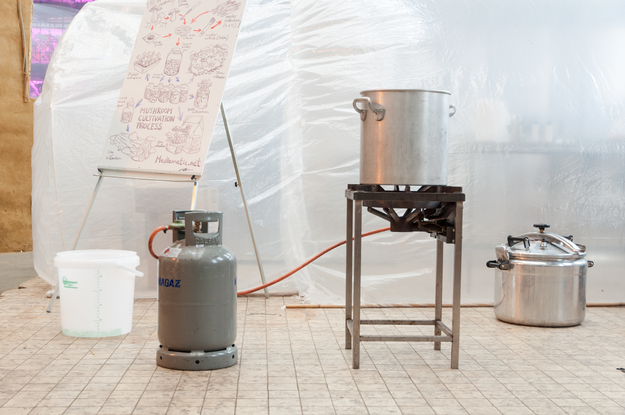
As a basic brewing recipe the "Lärcherlschas" was used, a Bock beer from Austria, found on www.maischemalzundmehr.de.
Brewing process
After everything was set up and all preparations were made we started out with the Maischplan. The 17l of water were heated up to 56ºC and the first two pantyhoses with cereal were put in, in total 6kg, and were cooked for 10 Minutes.
Cereal Brough - Shortly after adding the cereal thr brough looked like this
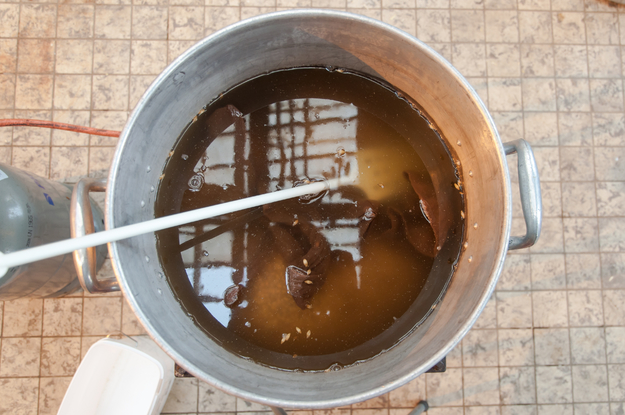
After that, the water was heated to 63ºC for 35 Minutes.
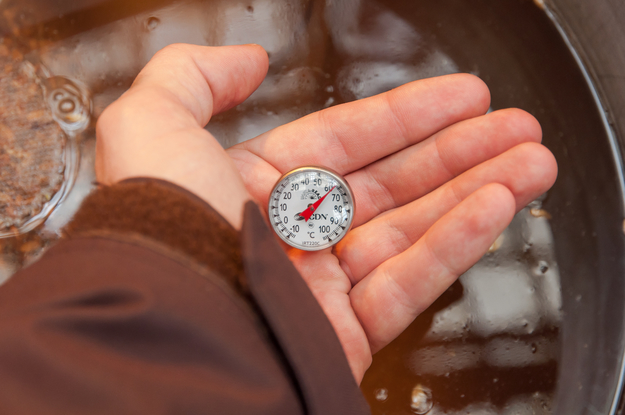
The water got a red brown color really fast, that even deepend over time.
The water was heated up to 75ºC for 25 Minutes.
After a total cooking time of 70 Minutes the panyhoses were removed from the cereal brough. The grain was washed out with 16l of fresh water in order to gather as many nutrients as possible. Afterwars it was added to the recently cooked brough and heated to 78ºC. During the whole Maischplan the brough needed to be stirred periodically.
Stirring the beer - Daniel is stirring the cereal brough during the process of beer brewing.
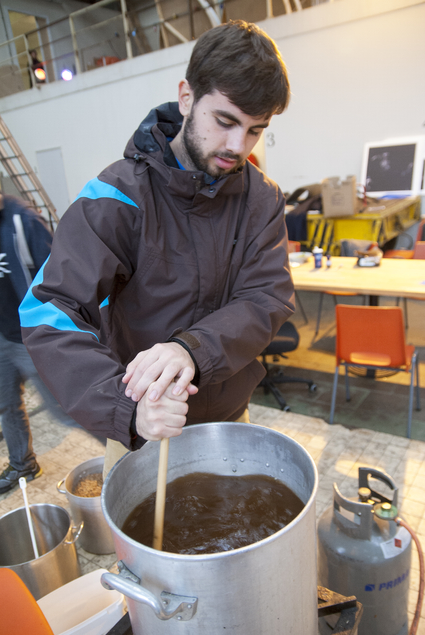
The used grain was filled in another pot to store it for Antoni, who would use it as a substrate for growing mushrooms.

Antoni was really happy and used the grain immediatly to prepare 3 huge bags of substrate for his Oyster Mushroom Workshop.
Antoni preparing substrate - Antoni prepares 3 huge bags of substrate with 6kg of cooked grain.
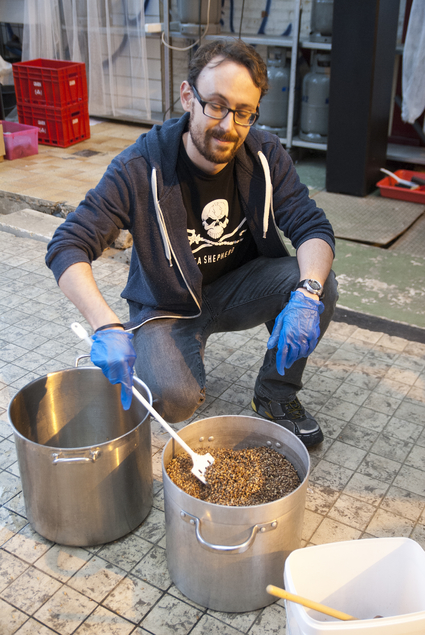
The next step was the Würzekochen.
The brough was boiled together with the aromatic hops, in our case these were hops harvested in September 2014 in the Hallertau in Germany. 45g of pure hops were boiled for 80 minutes at 100ºC. During that time the essential oils that come out of the hops' ingredient Lupulin got extracted.
Then 500g of honey were added and boiled for another 10 minutes.
Afterwards the final and most important ingredient of the brewing was added, 12g of "BREWFERM LAGER". The yeast requires a temperature between 12ºC and 15ºC.
As a final step the bucket was closed and the opening was stuffed with a siphon. A siphon allows gas from inside to leave, but no air from outside to get inside and cause contamination.
It should start working as soon as possible to prevent contamination and start fermentation.
As soon as the yeast starts spreading you should see foam on the fluid and CO2 coming out of the siphon.
In total 33l of brewing water were used, 17l of fluid were left in the end to ferment now inside the brewing bucket.
The cooking and boiling took around 3 hours.
The fluid was set to ferment at 90ºC on Friday evening.
